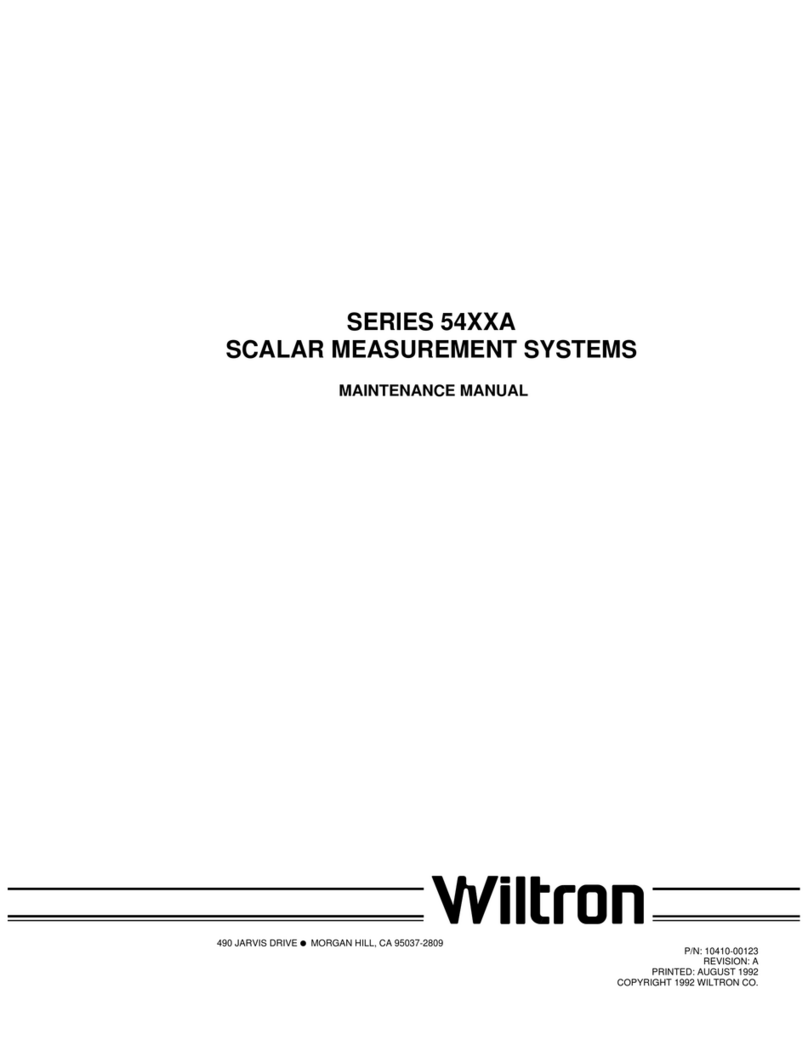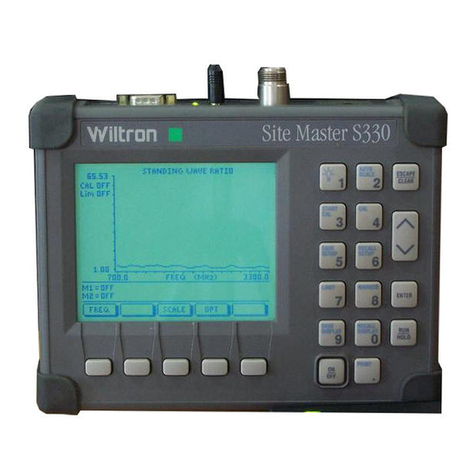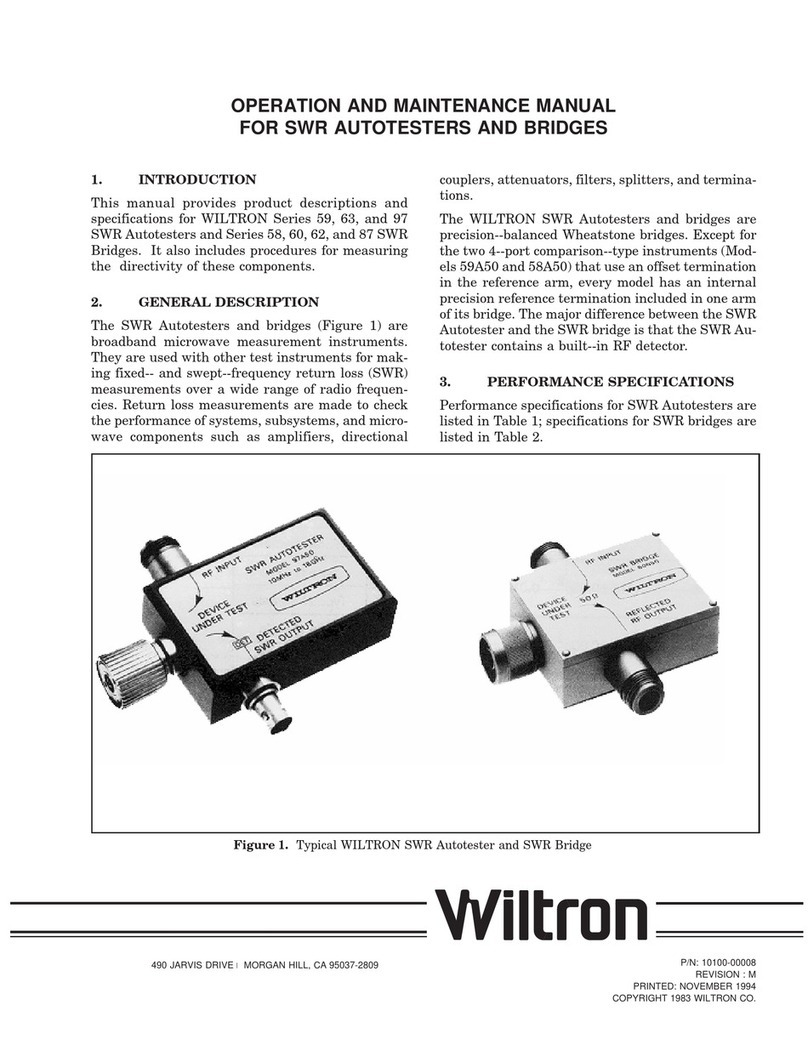
b. Avoid Over Torquing Connectors. Over tor-
quing connectors is destructive; it may damage
the connector center pin. Finger-tight is usually
sufficient for Type N connectors. Always use a
connector torque wrench (8 inch-pounds) when
tightening GPC-7, WSMA, or K type connectors.
Never use pliers to tighten connectors.
c. Avoid Mechanical Shock. SWR Autotesters
are designed to withstand years of normal bench
handling. However, do not drop or otherwise
treat them roughly. Mechanical shock will sig-
nificantly reduce their service life.
d. Avoid Applying Excessive Power. Series
560-9XXXX and Series 5400-6XXXX SWR
Autotesters are rated at +27 dBm (0.5W) maxi-
mum input power. Exceeding this input power
level, even for short durations, can permanently
damage their internal components.
e. Do Not Disturb Teflon Tuning Washers On
Connector Center Pins. The center conduc-
tor of many RF component connectors contains
a small teflon tuning washer that is located near
the point of mating (Figure 4). This washer com-
pensates for minor impedance discontinuities at
the interface. Do not disturb this washer. The
location of this washer is critical to the perform-
ance of the RF component.
f. Compensation Washers (WSMA Connec-
tors). WSMA connectors are optimized for con-
nection to standard SMA connectors. Whenever
two WSMA connectors are mated, a metallic
compensation washer should be inserted
between the two connectors at the point of mat-
ing (to provide electrical compensation for this
connector combination). The only exceptions are
the WSMA Open/Short and the RF Output con-
nectors of the 54XXX and other WILTRON RF
signal sources. A vial containing five of these
washers (P/N ND38252) is packaged with each
Series 19SX50 Air Line. Figure 10, beginning on
page 11, describes the procedure for installing
these washers.
g. Keep Connectors Clean. The precise geom-
etry that makes possible the RF component’s
high performance can be easily disturbed by dirt
and other contamination adhering to connector
interfaces. When not in use, keep the connectors
covered. Refer to paragraph 7 for cleaning in-
structions.
6. PERFORMANCE VERIFICATION
Performance verification consists of measuring the
directivity of the SWR Autotester and measuring
connector pin depth.
6.1. Pin Depth Measurement
Gauging sets for measuring the pin depth of the test
port connectors of SWR Autotesters and other preci-
sion RF components are available from WILTRON.
Table 2 lists the appropriate gauging set for each
connector type used on Series 560 and 5400 SWR
Autotesters. Refer to the instructions for gauging
connectors that are provided with each gauging set.
Refer also to the pin-depth specifications in Table 2
for each connector type.
6.2. Directivity Measurements
Directivity measurements are frequency limited. For
frequencies above 2 GHz, a magnified reflection tech-
nique (air line) measurement is used. Below 2 GHz,
where an air line is not effective, an error averaging
measurement method is used.
Table 3 (page 6) lists recommended test equipment
for performing these measurements. Measurement
procedures are given below.
Measuring the directivity of Series 560-9XXXX SWR
Autotesters above 2 GHz requires the use of a Series
18XX540 or 19XX50 Air Line that matches the test
port connector of the SWR Autotester being tested
(see Table 3). If a series 19SX50 air line is used
(WSMA connectors), compensation washers are re-
TEFLON WASHER
NOTE
The teflon washer is shown on a GPC-7
connector. A similar washer may be installed
on any WILTRON precision connector.
Figure 4. Tuning Washer on GPC-7 Connector
4SWR OMM
































